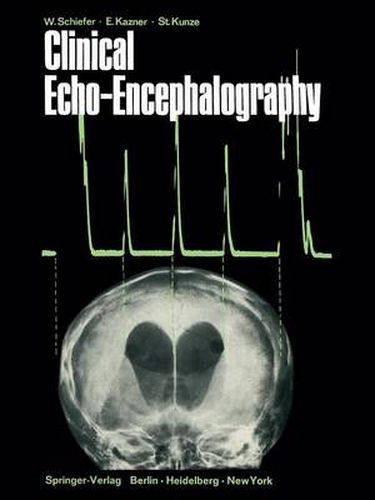Readings Newsletter
Become a Readings Member to make your shopping experience even easier.
Sign in or sign up for free!
You’re not far away from qualifying for FREE standard shipping within Australia
You’ve qualified for FREE standard shipping within Australia
The cart is loading…






This title is printed to order. This book may have been self-published. If so, we cannot guarantee the quality of the content. In the main most books will have gone through the editing process however some may not. We therefore suggest that you be aware of this before ordering this book. If in doubt check either the author or publisher’s details as we are unable to accept any returns unless they are faulty. Please contact us if you have any questions.
Echo-encephalography, introduced by LEKS ELL in 1955, has gained increasing importance for the early detection of numerous intracranial lesions in the last decade. The main advantage of this diagnostic procedure lies in the fact that it permits a rapid orientation about the spatial relationships within the skull without stressing or endangering the patient. Although this method alone only rarely allows a complete diagnosis, the echo-encephalographic findings always indicate which further diagnostic measures are most suitable for establishing the diagnosis with the greatest accuracy in every case. However, the correct interpretation of an echo-encephalogram is possible only, if the findings which are assumed to be pathological are evaluated in the light of the clinical symptomatology. Since JEPPSSON’S excellent monograph on the origin of the midline echo and its importance for the diagnosis of intracranial expansivities, published in 1961, a great deal of work has gone into the development of echo-encephalography all over the world. For this reason the possibilities of this procedure today go far beyond the mere demonstration of a supratentorial shift. Now we can frequently outline the width of the ventricles exactly and localize tumors or hematomas by means of abnormal reflections. Since a detailed description of the technique, application and present-day diagnostic uses of echo-encephalography has not been available as yet, we undertook to fill this gap in the German literature in 1967 with a monograph summarizing the hitherto existing experience as well as our own extensive case mate rial.
$9.00 standard shipping within Australia
FREE standard shipping within Australia for orders over $100.00
Express & International shipping calculated at checkout
This title is printed to order. This book may have been self-published. If so, we cannot guarantee the quality of the content. In the main most books will have gone through the editing process however some may not. We therefore suggest that you be aware of this before ordering this book. If in doubt check either the author or publisher’s details as we are unable to accept any returns unless they are faulty. Please contact us if you have any questions.
Echo-encephalography, introduced by LEKS ELL in 1955, has gained increasing importance for the early detection of numerous intracranial lesions in the last decade. The main advantage of this diagnostic procedure lies in the fact that it permits a rapid orientation about the spatial relationships within the skull without stressing or endangering the patient. Although this method alone only rarely allows a complete diagnosis, the echo-encephalographic findings always indicate which further diagnostic measures are most suitable for establishing the diagnosis with the greatest accuracy in every case. However, the correct interpretation of an echo-encephalogram is possible only, if the findings which are assumed to be pathological are evaluated in the light of the clinical symptomatology. Since JEPPSSON’S excellent monograph on the origin of the midline echo and its importance for the diagnosis of intracranial expansivities, published in 1961, a great deal of work has gone into the development of echo-encephalography all over the world. For this reason the possibilities of this procedure today go far beyond the mere demonstration of a supratentorial shift. Now we can frequently outline the width of the ventricles exactly and localize tumors or hematomas by means of abnormal reflections. Since a detailed description of the technique, application and present-day diagnostic uses of echo-encephalography has not been available as yet, we undertook to fill this gap in the German literature in 1967 with a monograph summarizing the hitherto existing experience as well as our own extensive case mate rial.